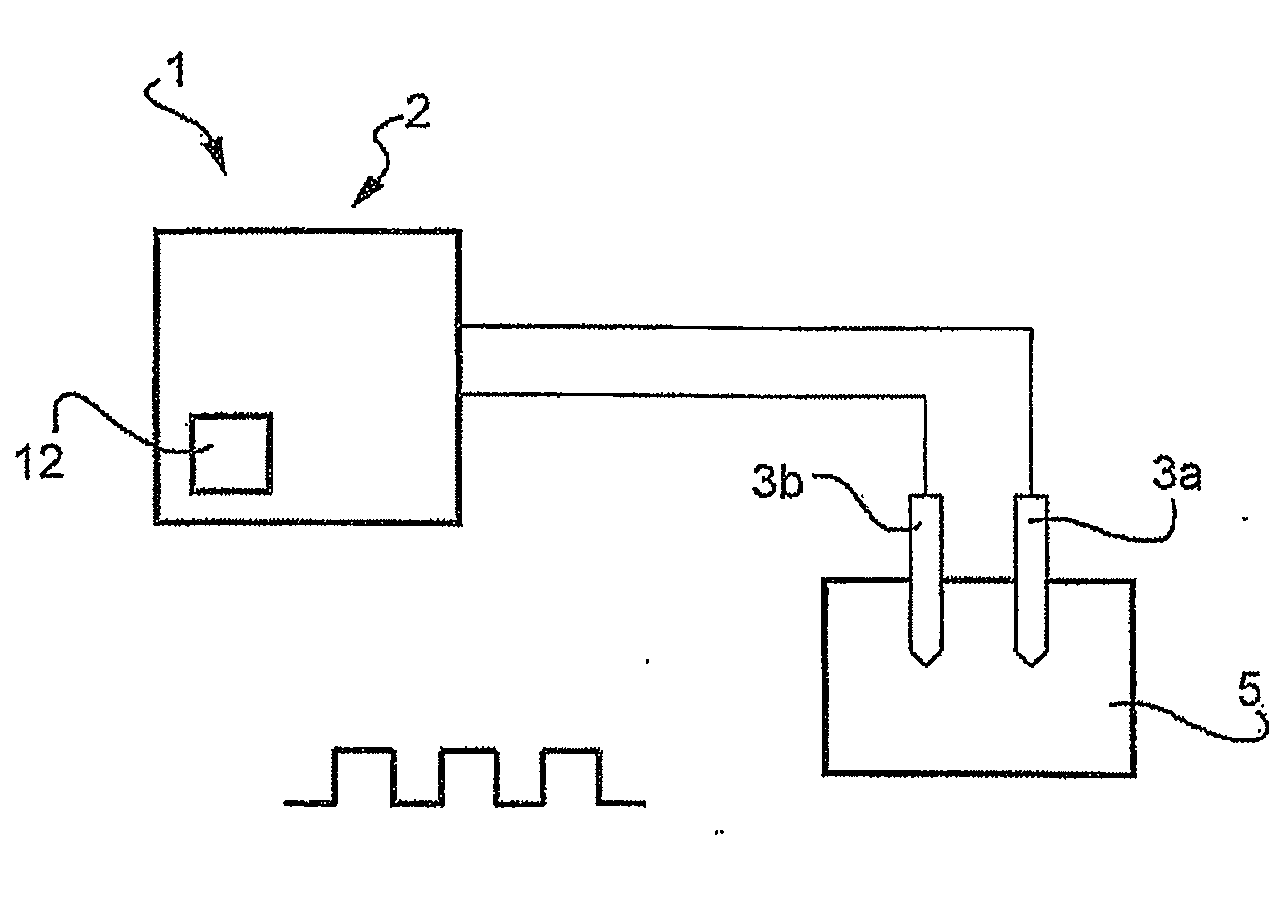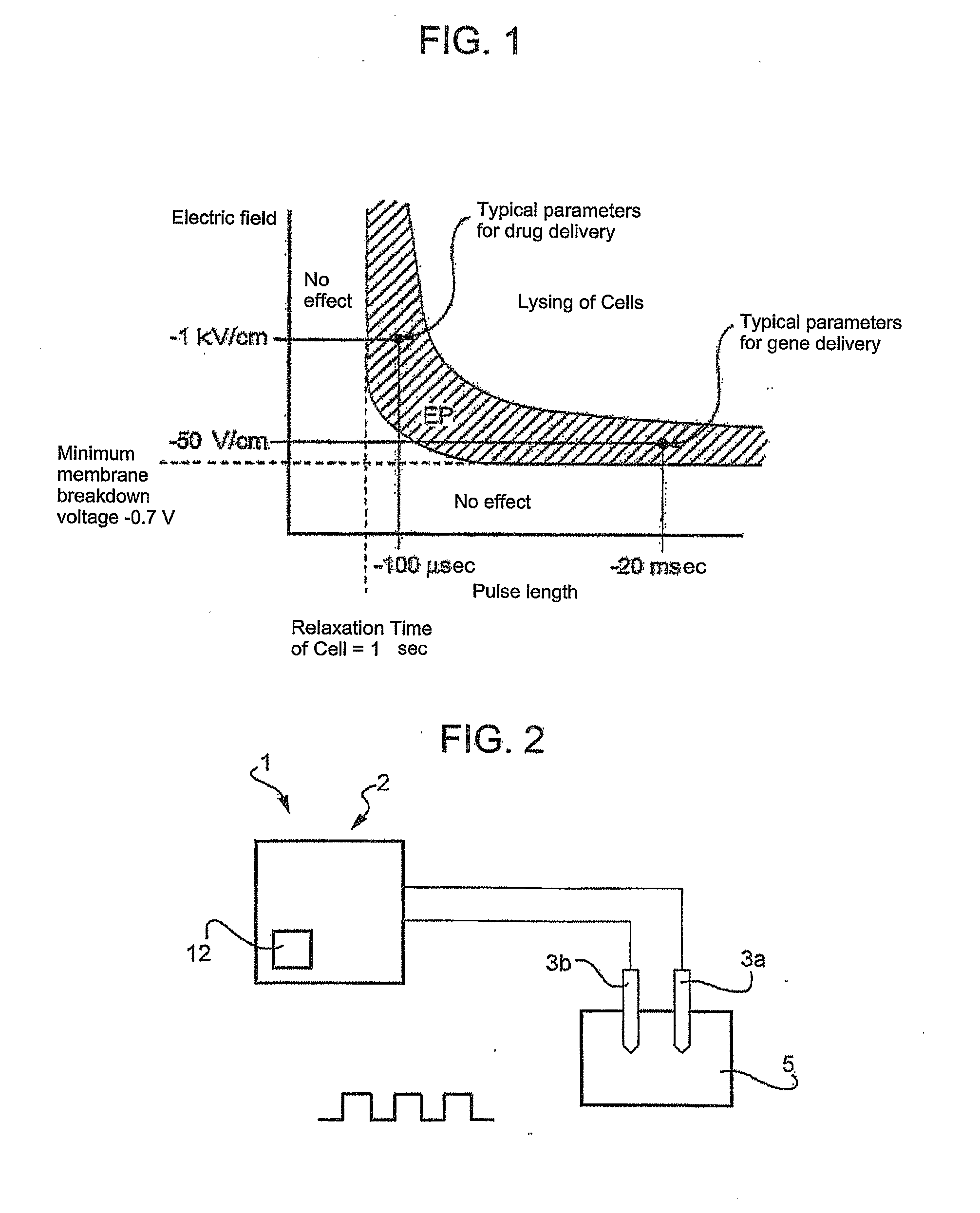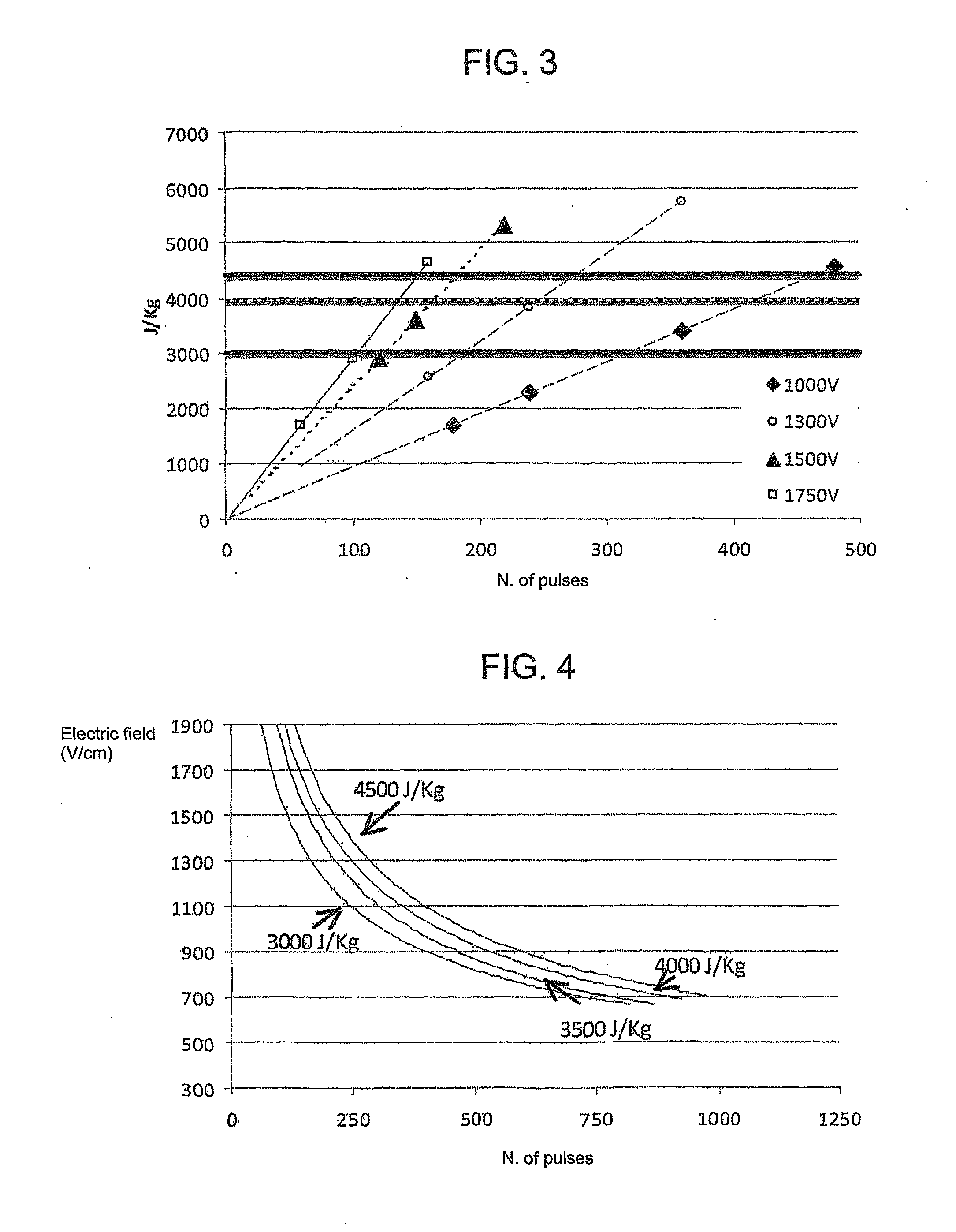Reversible electroporation device for inducing cell apoptosis
- Summary
- Abstract
- Description
- Claims
- Application Information
AI Technical Summary
Benefits of technology
Problems solved by technology
Method used
Image
Examples
example 1
[0059]New Zealand white rabbits were used and two or more electrodes were introduced in the distal femur where both bone tissue and cartilage tissue are present. The electrodes were also introduced in the vertebral body of sheep.
[0060]The electrodes were introduced in the tissue through an incision in the skin. Stainless steel electrodes were used: two or four electrodes with a diameter of 0.7 mm for rabbits and 2 electrodes with a diameter of 1.2 mm for sheep.
[0061]At the end of the electroporation treatment, the electrodes were cut at the bone surface and the portion inside the bone was left where it is, as a marker for later analyses.
[0062]Two days after treatment, tetracycline was injected into the rabbits to render fluorescent the new bone laid by osteoblasts.
[0063]The experiments were performed in conditions implying the use of different values of electric field (1000, 1300, 1500 and 1750 V / cm) and a number of pulses from 60 to 480; electric pulses lasting 100 microseconds wer...
experiment 1
[0065]When a 1000 V / cm electric field was applied, an increasing number of pulses was respectively delivered: 180, 240, 360 and 480. All of the cells were ablated from the tissue when 480 pulses were used.
[0066]The following table shows the values of the absorbed dose with respect to the applied electric field and number of pulses.
TABLE 2Absorbed doseV / cmNumber of pulses(J / kg)10001801700100024022711000360340610004804542
[0067]An electroporation at 1000 V / cm, 180 pulses and absorbed dose of 1700 J / kg results in an ineffective ablation. FIG. 6A shows that the fluorescence image highlights the presence of a signal around the electrode. FIG. 6B shows a histological image of a staining with haematoxylin and eosin showing the presence of intact cells.
[0068]An electroporation at 1000 V / cm, 480 pulses and absorbed dose of 4542 J / kg instead results in an effective ablation. FIG. 7A shows that the fluorescence image highlights the absence of a signal around the electrode. FIG. 7B shows a histo...
experiment 2
[0069]When a 1300 V / cm electric field was applied, an increasing number of pulses was respectively delivered: 160, 240, 360. All of the cells were ablated from the tissue when 240 and 360 pulses were used.
[0070]The following table shows the values of the absorbed dose with respect to the applied electric field and number of pulses.
TABLE 3Absorbed energyV / cmNumber of pulses(J / kg)130016025501300240383313003605749
[0071]An electroporation at 1300 V / cm, 160 pulses and an absorbed dose of 2550 J / kg of the rabbit distal femur using a four electrode configuration results in an incomplete ablation of the cartilage (A) near the electrodes (B) (FIG. 8A). An electroporation at 1300 V / cm, 360 pulses and an absorbed dose of 5749 J / kg instead results in the complete ablation of the cartilage tissue (A) between the electrodes (B) (FIG. 8B).
PUM
 Login to View More
Login to View More Abstract
Description
Claims
Application Information
 Login to View More
Login to View More - R&D
- Intellectual Property
- Life Sciences
- Materials
- Tech Scout
- Unparalleled Data Quality
- Higher Quality Content
- 60% Fewer Hallucinations
Browse by: Latest US Patents, China's latest patents, Technical Efficacy Thesaurus, Application Domain, Technology Topic, Popular Technical Reports.
© 2025 PatSnap. All rights reserved.Legal|Privacy policy|Modern Slavery Act Transparency Statement|Sitemap|About US| Contact US: help@patsnap.com



